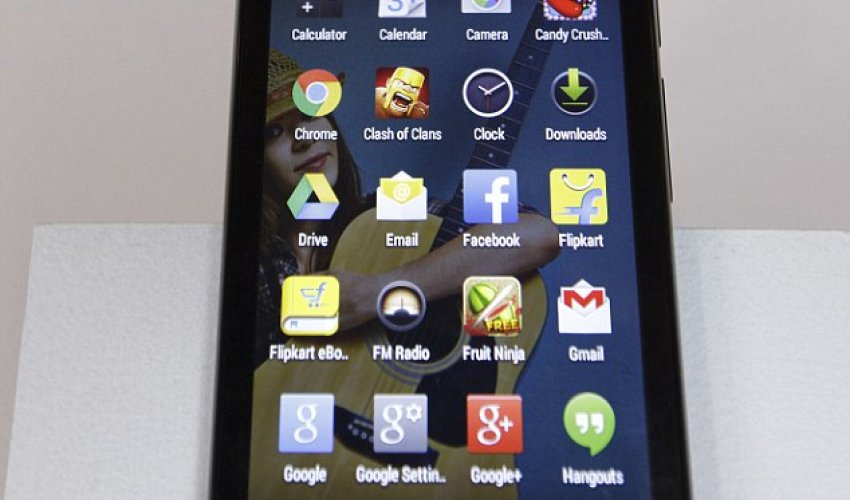Google to launch handset under $50

Google will release phones under $50 in a bid to revamp the underwhelming Android One.
The new model, aimed at developing markets, has failed to take off since the launch last September with a $100 price cap.
Now, the firm's South East Asia managing director Rajan Anandan reveals they are going back to the drawing board, starting with a cut-price version in India.
In an interview with the Financial Times, Mr Anandan conceded the product has 'not delivered to expectations' but said, 'it is like any company when you try to launch a new initiative – we had a few hiccups.'
Though no details have been released about the new version, being announced 'in the next few weeks', Mr Anandan said it will be priced between $31 and $47.
And the firm will also look at providing offline maps and services such as YouTube for the vast swathes of South East Asia with poor internet connection.
This step comes as Google rolls out its Project Loon - balloons built to carry internet connection to remote regions - in places such as Sri Lanka.
It is a fighting attempt at keeping a shoe in the door of a soon-to-be crucial market for mobile phone manufacturers and network providers.
He told the Financial Times: 'We're here really because 10 years from now a billion Indians will be online and when we have a billion Indians online we think that's going to make a huge difference to the global internet economy.'
Perhaps it is unsurprising that Google has defiantly continued introducing Android One to developing countries despite poor performance in India.
Last week the handset was introduced in Thailand, after Turkey, Indonesia, the Philippines, Pakistan, Bangladesh, Nepal, and Sri Lanka.
Blaming the set backs to date on Chinese suppliers, Mr Anandan insisted these issues have been taken on board and the new cheaper smartphones will be 'high quality'.
If the latest generation of Android handsets rolled out in Thailand and India is anything to go by, it looks promising. They are more powerful than before - though more expensive.
However, some analysts warn Google must first tackle its patchy OS updates in order to make sure users benefit fully from the attractive idea of a high quality, low cost product.
Many manufacturers in countries that provide Android One use an outdated OS - AOSP - not GMS, which strips the phone of Maps and Gmail.
Beyond the missing features, users of older OSs are also open to bugs, including Stagefright which swept handsets this week.
It can infect an Android handset via single MMS message that doesn’t have to be opened.
Google, along with Samsung and LG, insists security patches will now be sent out on a regular basis to defend phones.
(dailymail.co.uk)
www.ann.az
Similar news
Similar news
Latest news 
More news 



































 Photo
Photo 



 Video
Video 

